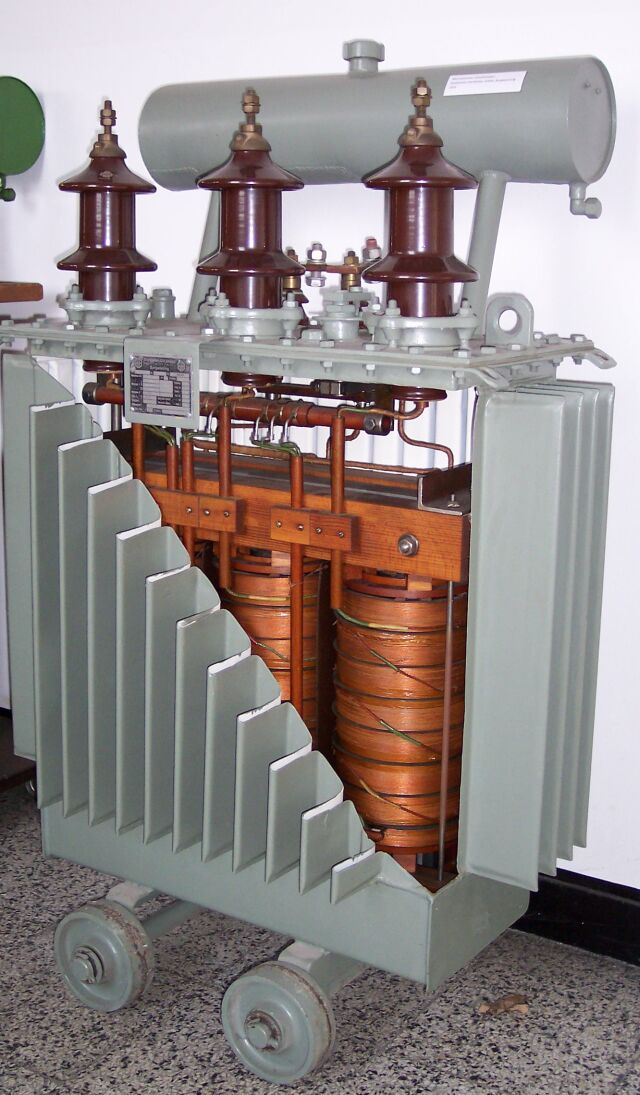
I had a meeting in an Electricity Supply Sub-station a few weeks ago. I had been shown photos of it on the basis that I would never be likely to see inside in person. Then, surprisingly, I got too see inside whilst an electrical contractor assessed some work. It was warm in there, and it hummed. I don't mean that there was a smell (although there was a sort of musty, oily smell) but there was a very loud, deep, humming noise. In Britain the mains is delivered at 50 Hertz (cycles a second) and any large electrical installation will waste a small amount as sound (and rather more as heat).
The room itself was perfectly safe as all of the metal was earthed and no hazardous parts were exposed without opening covers. There was a rather hairy looking open fuse panel on one wall that looked straight out of Dr. Frankenstein but I was pleased to realise that it was disconnected long-obsolete equipment. 
The power arrives on four wires at 11,000 volts (called Medium Voltage, or MV) and is connected to some large switchgear for isolation and changeover purposes. At higher voltages, you can't just switch electrical circuits off, as they will simply arc across between the contacts. Instead, elaborate mechanisms have to separate the contacts and then quench the arc. (That is why those huge electricity farms you see are so complex). The power then goes into a transformer (as pictured above, but without the big hole in) to be transformed to a more useful voltage, in Britain it is officially 230 Volts (but generally 240 Volts in practice). This is referred to as Low Voltage (LV) but it is the sort of low voltage that will happily kill you in an unguarded moment. Coming out of the transformer, the power goes through some protective fusing, measurement for charging purposes and a large isolation switch before being presented to the Consumer. To put these things in scale, you would need a crane to move the ironwork in these rooms, due to size and weight. (The transformer had enough capacity to light up 8,000 100W light bulbs and was comparable in size to a typical 12 person lift car.) Another analogy is of a 1,066 Horsepower engine!
The thing about sub-stations is that they are literally everywhere but generally un-noticed; it is very unlikely that anyone reading this is much more than a stone's throw away from one. They are also controversial and there are concerns that there are health risks due to long term exposure to the magnetic fields that concentrate in them.
Are there genuine health risks? Well, I wouldn't want to buy a house underneath a power pylon. When the West was in denial, the Ruskies were fitting Faraday Cages to their tractors where there was risk of exposure. You can now buy a book on the topic.
Wednesday, October 10, 2007
Electrickery
Dewey Analogue Technology
Subscribe to:
Post Comments (Atom)





1 comment:
That's a fascinating article because I've never known how it all actually operates.
Post a Comment